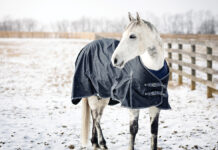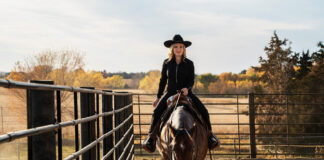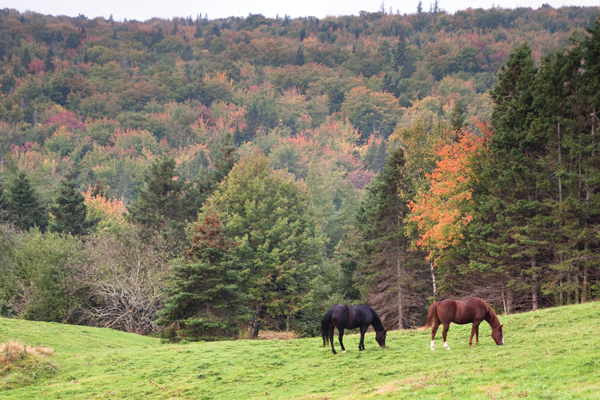
Each season change brings its own set of challenges and opportunities. Here are the most important checkpoints to carefully consider this fall for care of your horse before the snow and ice arrive to make life harder.
Hoof Care
Hickman offers the following hoof care advice for fall.
Inspect Pastures: Closely monitor pastures that include or are near wooded areas. Some species of trees produce acorns, nuts and fruits such as apples and pears at this time of year. While many horse owners already know that laminitis and founder caused by grass are of particular concern, they don’t realize that a horse can also founder, or at the very least colic, from overeating these foods.
Trimming & Shoeing: The hoof tends to grow a little more in the fall. In order to avoid problems down the road, it’s important for owners to be diligent about scheduling trims, resets, and/or new shoes.
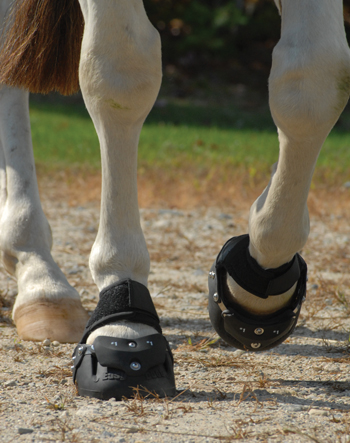
Correct issues early. Just as important as routine hoof care, now is the time to make sure there are no problems, and if you find any, to correct them. It’s critical to monitor your horse’s hooves for issues such as cracks, white line disease, and thrush.
A wet fall can increase the frequency of thrush. Then, as the weather gets colder, horses are being ridden less and are sometimes even turned out for the winter, resulting in less movement for the horse. By its nature, exercise generates movement, and movement grows hoof. It can be more difficult to correct issues when the hoof isn’t growing as much.
Fall is a great time to examine your horse’s vaccination protocol, especially if buying a new horse with unknown disease history, introducing a new horse into your herd, or after an extended mosquito season.
Don’t necessarily pull shoes. Abruptly pulling shoes with the change of the seasons can create temporary soreness for your horse. If you decide to do so, using hoof boots while riding can help alleviate the problem. Still, as the ground begins to freeze in late fall or early winter and your horse lacks the protection offered by shoes, there will be a period of time while he becomes accustomed to the change when he could be uncomfortable.
However, if your horse is already barefoot, it’s OK to leave him that way. Some horses need shoes year-round, but for others, keeping them on can be a matter of personal preference, according to Hickman.
Preventive Fall Horse Care
Nathan Voris, DVM, is associate director of equine technical services for Zoetis. He echoes Hickman’s sentiments that fall is one of the best seasons for horse health. He recommends the following preventative care strategies.
Vaccines: Every horse should receive an annual equine influenza and rhinopneumonitis vaccination, but vaccinating above and beyond this for the fall booster season has special considerations.
For example, horses who are traveling or live with horses who are traveling should receive semi-annual vaccinations. Horses living in areas where flooding is prevalent should be vaccinated against leptospirosis. If there is risk of exposure, horses should be vaccinated against strangles.
When thinking about horse care, fall is also a great time to examine your horse’s vaccination protocol, especially if buying a new horse with unknown disease history, introducing a new horse into your herd, or after an extended mosquito season.
Vaccinations can be administered year-round. Even late in the year, it’s not too late to administer booster vaccines or vaccines that may have been missed during the spring, such as West Nile virus and Eastern and Western equine encephalomyelitis.
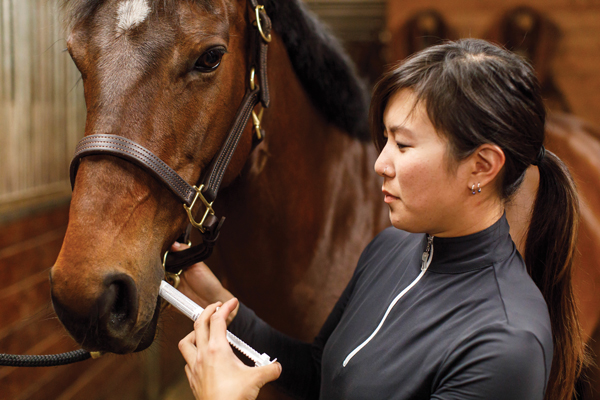
Deworming: Every horse that has access to pasture should be treated against tapeworms, but don’t simply follow the calendar and deworm on the first day of fall. While this is a good general recommendation, the best defense against tapeworms is to deworm at the end of the grazing season, whenever that happens to be for your area of the country.
Tapeworms are transmitted by a horse passing eggs in his manure that are eaten by a type of mite. The eggs develop into larvae within the mites, which are picked up off the grass and eaten by the horse, allowing the larvae to develop into adult tapeworms.
During cold weather, the mites burrow into the ground and are less likely to be picked up by the horse, creating the right conditions to deworm against them. In more temperate climates, deworming against tapeworms could also be considered as part of an end of winter or early spring health routine.
In addition, most adult horses will require one to two treatments per year for small strongyles, and the fall is a good time to do this.
Dental: Because hay will be your horse’s primary food source and large-intestine fiber fermentation provides an important source of warmth, now is the time to schedule a dental exam, particularly if one was missed in the spring, to make sure teeth are functioning well.
It can also be a good time for a general checkup, especially for horses of an advanced age. During the veterinarian’s visit, be sure to discuss any dietary or other concerns you may have so you can prevent problems before they start.
The fall, however, is not the best season to run certain types of diagnostic tests. For example, if you have concerns that your horse may have developed Cushing’s disease, also known as pituitary pars intermedia dysfunction (PPID), false positive results are frequently observed when testing is done during the fall. This type of test is best performed during the spring or summer when daylight cycles allow for more accurate results, says Voris.
Nutrition
Rhonda Hoffman, Ph.D., professor and director of horse science with Middle Tennessee State University, recommends a monthly rather than a seasonal assessment of dietary needs for most horses. She offers the following guidance.
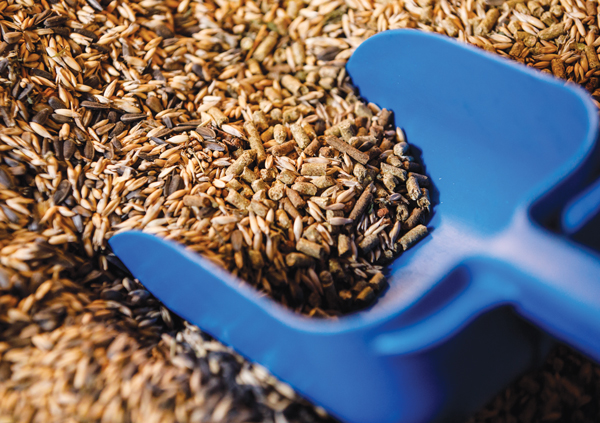
supplement are good sources of concentrated calories. Photo by Shelley Paulson
Assess Weight: Rather than simply visually assessing your horse’s weight, body condition scoring using the Henneke scale of 1 (emaciated) to 9 (obese) offers a quantitative method of doing so.
A score of 5—ribs are easy to feel but can’t be seen—is optimal at anytime of year. If your horse is a 4, you will be able to see a hint of ribs. Some older horses fall into this category and may not have enough fat cover going into the winter months to stay warm. In this case, it will be helpful to look at ways to begin putting weight back on.
On the other hand, a horse that is a 6 or 7 and slightly overweight is not a huge concern just before winter sets in. However, one that scores an 8 or a 9 will need to have the unhealthy excess pounds addressed with diet and exercise, regardless of season.
Underweight horses should be fed the best quality hay possible, and good pasture if available. Hay cubes or alfalfa can help to supplement issues with hay quality.
High-calorie grain mixes can also be added to or increased in the diet. Your local agriculture extension agent or feed sales representative can offer advice on what and how much to feed for weight gain. Fat supplements are another option if you prefer not to feed grain.
Weight tapes can aid you in monitoring your horse’s weight, and they work well for stock-type horses and small Thoroughbreds. However, there is a greater margin of error when using them for Minis, draft-type, or warmblood horses.
Hoffman also recommends the Healthy Horse smartphone app. Using a fabric measuring tape and the app, you can get a fairly accurate weight assessment, regardless of type.
Evaluate Hay Supply: It’s essential to assess how much hay your horse will need to get through the season. To roughly calculate how much you’ll need, keep in mind the average horse consumes approximately 600 pounds of hay per month during the winter.
According to Hoffman, you should start feeding hay as soon as pasture quality declines or becomes insufficient to meet nutritional demands.
Further Reading
- Fall Riding and Horse Care
- Fall Forage for Horses
- What Fall Cleanup Means on a Horse Farm
- Why Senior Horses Need Fall Dental Check-Ups
- Preventing Fall Founder
This article about fall horse care originally appeared in the November 2019 issue of Horse Illustrated magazine. Click here to subscribe!



